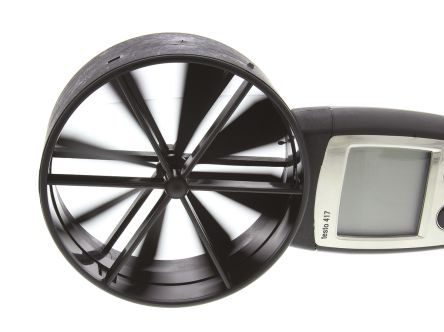What Velocity Should House Registers Be
Get Tech Tips
Subscribe to gratuitous tech tips.
Air Velocity Quick Tips
Recommended Duct Velocities (FPM)
| Duct Type | Residential | Commercial / Institutional | Industrial |
| Principal Ducts | 700 – 900 | 1000 – 1300 | 1200 – 1800 |
| Co-operative Ducts | 500 – 700 | 600 – 900 | 800 – one thousand |
As service technicians, we are ofttimes expected to understand a bit nearly blueprint to diagnose a trouble fully. Duct velocity has many ramifications in a system, including:
- Loftier air velocity at supply registers and render grilles resulting in air noise
- Low velocity in certain ducts resulting in unnecessary gains and losses
- Low velocity at supply registers resulting in poor "throw" and, therefore, room temperature command
- High air velocity within fan coils and over cased coils resulting in college bypass factor and lower latent rut removal
- Loftier TESP (full external static pressure) due to high duct velocity
Duct FPM can be measured using a pitot tube and a sensitive manometer, induct vane anemometers like the Testo 416, or a hot wire anemometer similar the Testo 425. Measuring grille/register face velocity is much easier and can be done with any quality vane anemometer, with my favorite being the Testo 417 large vane anemometer.

Starting time, you must realize that residential, commercial, and industrial spaces tend to run very dissimilar design duct velocities. If you have ever sat in a theater, mall, or auditorium and been striking in the face up with an airstream from a vent xx feet away, you have experienced High-designed velocity. When spaces are big, high face velocities are required to throw beyond greater distances and broadcast the air properly.
In residential applications, you lot will want to come across 700 to 900 FPM velocity in duct trunks and 500 to 700 FPM in branch ducts to maintain a expert residuum of low static pressure and good flow, preventing unneeded duct gains and losses.
Render grilles themselves should be sized as large every bit possible to reduce face up velocity to 500 FPM or lower. This helps profoundly reduce full arrangement static pressure also as return grille noise.

Supply grilles and diffusers should be sized for the appropriate CFM and throw based on the manufacturer'southward annals specs like the ones from Hart & Cooley shown above. Keep in mind that the college the FPM, the further the air will throw. More mixing will occur via entrainment, merely the register will also exist noisier.
—Bryan
 Related Tech Tips
Related Tech Tips
 Finishing Merchandise School? Some Things you lot Demand to Know
Finishing Merchandise School? Some Things you lot Demand to Know
So, I hear you lot're only finishing trade school? Well done. You chose to accept an excellent path, and now your journeying is simply beginning. How this will go is actually upward to you, and that's a expert thing! You aren't going to be forced in 1 management or some other; you get to cull. Permit'due south talk […]
Read more than
 Hit Your Spots
Hit Your Spots
When I was younger, I used to play and watch golf quite often. My father enjoys golf, and he would accept me with him on many of his Saturday forenoon rounds. Equally a child, it was all about Distance, how far I could whack the ball with a driver—ESPECIALLY when I could outdrive my friends. […]
Read more than
 Lifting Techniques Function 4 - Using Unistrut
Lifting Techniques Function 4 - Using Unistrut
This is Part 4 series past Senior Refrigeration Tech (and prolific author) Jeremy Smith. Pay attention to this one, folks. I know rigging and safe lifting practices may be tiresome to some of you, but information technology could very well save your dorsum or your life. Disclaimer This article is written by a technician representing his […]
Read more
Source: https://hvacrschool.com/air-velocity-quick-tips/
Posted by: carterseved1952.blogspot.com



0 Response to "What Velocity Should House Registers Be"
Post a Comment